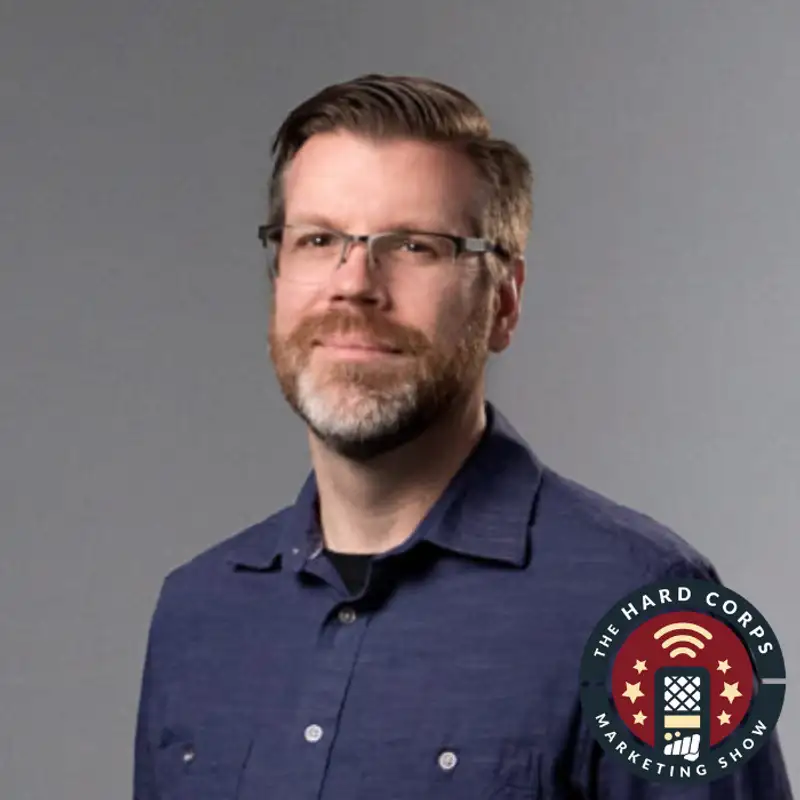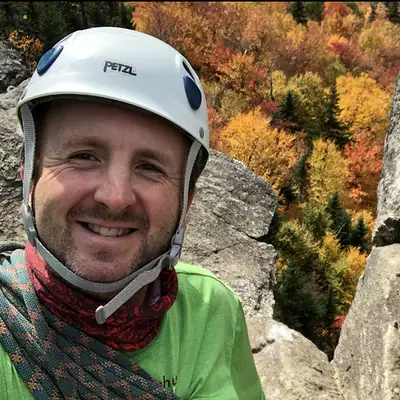
The SEO Puzzle Master - Stoney deGeyter - Hard Corps Marketing Show #120
If a visitor came to your website, can they tell the product or service that your company sells just by looking at the navigation or will a visitor have to click through to find what they are looking for?
A Marketing Leader, Speaker, and the Author of The Best Damn Web Marketing Checklist, Period 2.0, Stoney deGeyter, provides clarity for marketers around steps to making your site search engine friendly and search engine optimized.
This episode covers website navigation best practices, keyword search data collection, and where to start when building a website. Check it out!
Takeaways:
If you are developing a website, start with the navigation. The navigation sets the tone for the rest of the site. A visitor should be able to tell what your company does from the navigation tabs.
The products or services that your company provides should be the focus of your navigation. Most of the time visitors are going to your website to look at your products or services, not your company and core values.
Visitors to your site should have to read and dig as little as possible to get to what they need. Make your content accessible to them.
When building a site, put in the work and do keyword research. The goal is to find the keywords that buyers are using to describe your product or service. Conduct a search at the core term search level, the higher-level two to three word bucket and then at the deeper phrase level, the questions that people are searching for concerning your product or service. Keywords should be grouped based on intent. What is the visitor searching for?
Making sure a site is search engine friendly focuses on using the right HTML markups, schema, and the right headlines.
The speed of your site is important and may not even be a problem with the development. Check your website host and see how your speed measures up.
When considering where to improve on your website, look at the performance data. What pages are people finding and on what pages are they converting?
Advice from Stoney - Everyone is going to get negative reviews, but it is how you handle it that matters.
Links:
Twitter: https://twitter.com/StoneyD
Email: stoneygd@gmail.com
LinkedIn: https://www.linkedin.com/in/stoneygd/
The Best Damn Web Marketing Checklist, Period 2.0: https://www.amazon.com/Best-Damn-Marketing-Checklist-Period/dp/0990346145/ref=sr_1_3?crid=1QWMUG975GCP7&keywords=the+best+damn+web+marketing+checklist%2C+period&qid=1579716576&sprefix=the+best+damn+web+marketing%2Caps%2C202&sr=8-3
Busted Myths:
One can correlate the terms search engine friendly and search engine optimization as the same thing. - They are NOT the same thing. Search engine friendly deals with the architecture, coding, and making sure that the website is accessible. Search engine optimization focuses on the keywords specifically used in the content and calls to action.
If a visitor came to your website, can they tell the product or service that your company sells just by looking at the navigation or will a visitor have to click through to find what they are looking for?
A Marketing Leader, Speaker, and the Author of The Best Damn Web Marketing Checklist, Period 2.0, Stoney deGeyter, provides clarity for marketers around steps to making your site search engine friendly and search engine optimized.
This episode covers website navigation best practices, keyword search data collection, and where to start when building a website. Check it out!
Takeaways:
- If you are developing a website, start with the navigation. The navigation sets the tone for the rest of the site. A visitor should be able to tell what your company does from the navigation tabs.
- The products or services that your company provides should be the focus of your navigation. Most of the time visitors are going to your website to look at your products or services, not your company and core values.
- Visitors to your site should have to read and dig as little as possible to get to what they need. Make your content accessible to them.
- When building a site, put in the work and do keyword research. The goal is to find the keywords that buyers are using to describe your product or service. Conduct a search at the core term search level, the higher-level two to three word bucket and then at the deeper phrase level, the questions that people are searching for concerning your product or service. Keywords should be grouped based on intent. What is the visitor searching for?
- Making sure a site is search engine friendly focuses on using the right HTML markups, schema, and the right headlines.
- The speed of your site is important and may not even be a problem with the development. Check your website host and see how your speed measures up.
- When considering where to improve on your website, look at the performance data. What pages are people finding and on what pages are they converting?
- Advice from Stoney - Everyone is going to get negative reviews, but it is how you handle it that matters.
Links:
- Twitter: https://twitter.com/StoneyD
- Email: stoneygd@gmail.com
- LinkedIn: https://www.linkedin.com/in/stoneygd/
- The Best Damn Web Marketing Checklist, Period 2.0: https://www.amazon.com/Best-Damn-Marketing-Checklist-Period/dp/0990346145/ref=sr_1_3?crid=1QWMUG975GCP7&keywords=the+best+damn+web+marketing+checklist%2C+period&qid=1579716576&sprefix=the+best+damn+web+marketing%2Caps%2C202&sr=8-3
Busted Myths:
- One can correlate the terms search engine friendly and search engine optimization as the same thing. - They are NOT the same thing. Search engine friendly deals with the architecture, coding, and making sure that the website is accessible. Search engine optimization focuses on the keywords specifically used in the content and calls to action.
Creators and Guests

Host
Casey Cheshire
CEO & Founder of Ringmaster Conversational Marketing. Casey Cheshire is a marketer, serial entrepreneur, and adventurer. He has been in EO for close to 10 years and counts his relationships as a key reason for his continued success. Casey’s passion for podcasting led to him founding Ringmaster Conversational Marketing. Ringmaster helps B2B businesses launch podcasts that drive growth and revenue. Previously, Casey founded and ran Cheshire Impact for 10 years. It became the top Salesforce Pardot marketing automation solutions partner in the world before a successful exit in 2021. He is also a US Marine Corps Veteran where he served in the Infantry and deployed to some very hot climates. In his free time, Casey likes to skydive, climb mountains, and pretend to be a hungry bear for his two kids.